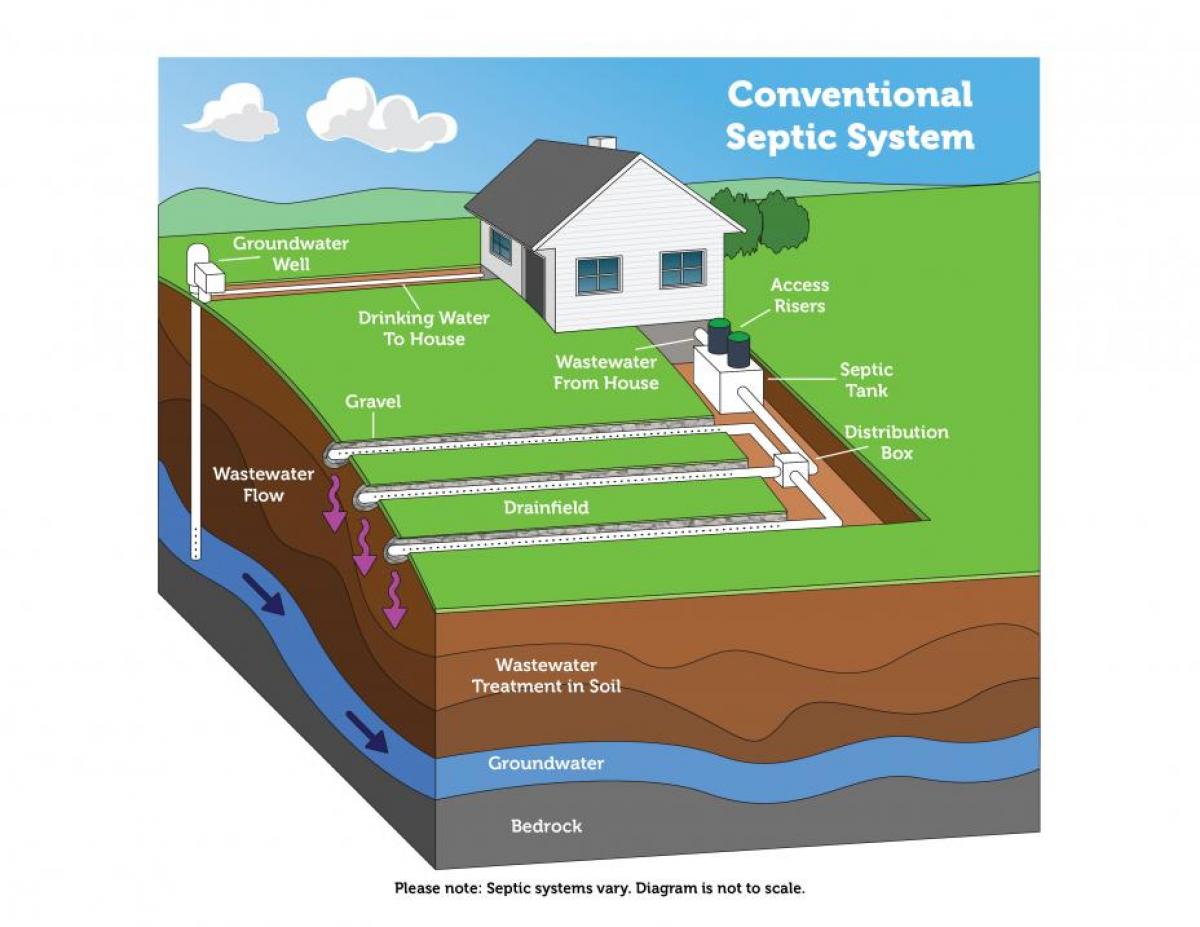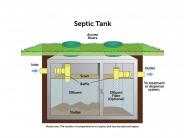Conventional Septic Systems

CONVENTIONAL SEPTIC SYSTEMS
The simplest types of septic systems are conventional systems. Conventional septic systems typically consists of two major components: the septic tank and the absorption field (also known as the drainfield).
Wastewater flows from the household to the septic tank. A septic tank is a watertight structure constructed of either concrete, metal, or fiberglass and is designed to take in wastewater. This wastewater is held in the septic tank long enough to separate into three distinct layers. The top layer is the scum layer that is composed of grease, oils, and floatables. The bottom layer is the sludge layer that consists solids and waste that cannot float. Anaerobic bacteria present in the sewage help break down some of the waste in the septic tank. The middle layer is the liquid effluent layer which is allowed to flow out of the septic tank through T-shaped baffles. This effluent layer flows onto the absorption field.
The absorption field usually consists of a series of trenches that allow the liquid effluent to slowly be emitted. Each trench consists of a porous pipe on top of a media such as sand and/or gravel. The liquid effluent is allowed to slowly percolate into the media and surrounding soil where the remaining pathogens, viruses, and bacteria are naturally treated.
Benefits of using a conventional system include:
- Low maintenance
- Low cost of operation
- No electricity needed
Disadvantages of conventional systems include:
- Cannot be installed in sensitive areas and as many soil types as aerobic systems can
- Produces a lower quality effluent than aerobic systems

